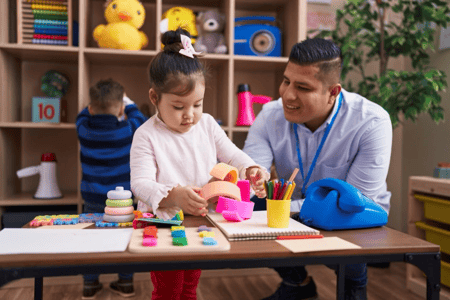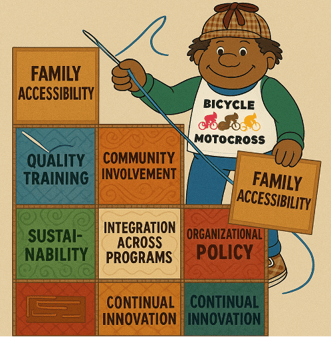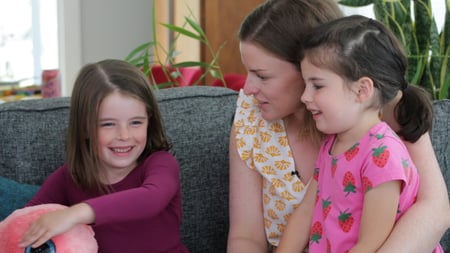How the Well-Baby Program Supports Healthy Child Development

Check out our blog for social-emotional learning articles, news, and more!
Promoting Incredible Years (IY) Connections during Times of Social Distancing: Reaching out to Parents and Children Who Participated in IY Dinosaur Small Group Treatment or Classroom Prevention Curriculum
Many IY child group leaders, therapists and teachers have reached out to us to ask how to support children who have been participating in the IY Dinosaur small group treatment programs in their clinic, or in their classroom prevention curriculum in schools. With Covid-19 pandemic resulting in school closure and social distancing recommendations, we recognize you are no longer able to do this group work and that many of you will be working from home. First, know that we are grateful to you all for your efforts and commitment to delivering the Dinosaur social and emotional curriculum with children. Thank you for your efforts to support these families at this challenging time. We hope that what the children have learned so far in the dinosaur program in terms of emotional literacy, anger management, problem solving, and self-regulation will help these children use these coping skills. This document is designed to offer tips to child small group therapists and teachers about connecting with parents and children who will, right now, need support more than ever. We are fortunate to be able to take advantage of technology that allows people to see and speak to each other and even watch videos together.
 Because children are out of school and at home, likely with parents or caretakers, on-going family support will involve both giving on-going support to the parents or caretakers as well as the children. In some cases, parents and children may both have been participating in IY parent and child groups. If that is the case, parent group leaders can provide continued support via Skype or Zoom calls to the parent regarding parenting skills as documented in our prior blog last week. Group leaders, therapists or teachers who worked directly with the children in small groups or classrooms can also provide support to parents as well as their children.
Because children are out of school and at home, likely with parents or caretakers, on-going family support will involve both giving on-going support to the parents or caretakers as well as the children. In some cases, parents and children may both have been participating in IY parent and child groups. If that is the case, parent group leaders can provide continued support via Skype or Zoom calls to the parent regarding parenting skills as documented in our prior blog last week. Group leaders, therapists or teachers who worked directly with the children in small groups or classrooms can also provide support to parents as well as their children.
This document provides guidelines for how teachers, therapists and group leaders can support families whose children have participated in small group dinosaur or classroom based dinosaur programs.
Children participating in the classroom Dina Prevention Program versus the Small Group Dinosaur Treatment Program may need different levels of on-going support. Teachers and group leaders/therapists can make decisions about how much support is needed and feasible for each child and family.
Letters to Children and Parents
We have posted new Covid-19 handouts on the parent/teacher resources page of our website. These can be sent to parents and children in cases where individual contact is not possible, or can supplement phone calls from teachers or therapists.
http://www.incredibleyears.com/parents-teachers/articles-for-parents/
 One handout includes information for parents on how to talk with their children about the virus and how to set up a schedule at home. There is also a letter to children from Dina Dinosaur about how she misses them, what she is doing and how she is helping others stay healthy by washing her hands and calling her grandparents instead of visiting. The third document is some of Dina Dinosaur’s suggested incredible activities related to things she has taught the children in their Dinosaur Program.
One handout includes information for parents on how to talk with their children about the virus and how to set up a schedule at home. There is also a letter to children from Dina Dinosaur about how she misses them, what she is doing and how she is helping others stay healthy by washing her hands and calling her grandparents instead of visiting. The third document is some of Dina Dinosaur’s suggested incredible activities related to things she has taught the children in their Dinosaur Program.
Keeping Calm and Providing Supportive Parenting During the Coronavirus
A Letter from Dina to Kids During the Coronavirus
Home Activities for Young Children During the Coronavirus
Individual Contact with Families and Children
Child therapists and teachers may also want to have direct connections with families and children through personal calls. For lower risk children, this might be one friendly check in call where the teacher speaks to the child for a few minutes. You can even do this call with one of your puppets such as Wally Problem Solver or Felicity Feelings. For higher risk children and families, on-going regular contact may be needed with both the parent and child. Below are options for connecting with families through technology. First, we describe how Zoom can be used and then we outline a template for what to cover in a call or in a series of weekly 10-20 minute calls. Of course, being flexible in what you cover is the name of the game. Most especially your efforts to reach out to support and show your caring for families and their children will make all the difference.
How to Use Zoom
To use Zoom, group leaders will need to open a free account on zoom.com. Prior to making the Zoom call, group leaders set up a meeting and send a link to the parent.
When parent clicks the link for the first time, they will be prompted to download a free App. After that the parents should be connected automatically to the call. In zoom group leaders will be able to share their desktop with the family. This is how you would share a video. If you do not know how to do this, you can find tutorials online.
If this does not work for you, try face time or Skype. Both will allow you to see each other face-to-face but don’t allow sharing of video.
Sample On-Line Remote Sessions
Call with Parent Only for Higher-risk Child/Family.
Calls with Child:
Considering the child’s developmental level and ability to focus, set up a call time for the child. Ideally this should be a time that a parent/caregiver and child can be on the call together. Calls may last between 10-20 minutes, depending on the age and attention span of the child. Lower risk children may receive one call, high-risk children/families may receive on-going calls.
Sample Outline for 1st Call with the Parent and Child (10-20 minutes):
Wally and Dina
Dina Meets Dinatronic
Rules for Survival
Sample Outline for 2nd Call and Beyond with Parent and Child (10-20 minutes)
Give parent and child an assignment to do one joint activity together before next time. The child group leader and puppet might help brainstorm the activity if child and parent need help. Check out the Dina’s Fabulous Home Activities document.
Flexibility will be the name of the game here. Children will have varying degrees of interest and engagement in this process. Some children may be captivated by talking to the teachers/group leaders and puppets this way. Others may quickly lose interest. Reassure parents that it is okay if the child wanders off. In these cases, keep the calls very brief. The group leader or teacher can provide the parent with the information about the new content and give the parent tips on how to coach this during the week.
For example, “Notice times when your child looks happy and comment on that out loud. You might say: ‘You seem so happy that you get to go outside this afternoon.’”
Or, “Today we are going to talk about and practice taking turns. When your child is playing this week, you can sit down with him and model turn taking. You can hand him a toy and ask if he’d like a turn. Then you could ask if you could have a turn with something he is playing with. Praise him if he shares the toy and comment on the fact that you are taking turns. If you can do this a lot of times this week, he will start to learn what this feels like to take turns.”
If the child is misbehaving in the background, encourage parents to ignore, help coach them with opportunities to give proximal praise, and keep the call as short as possible.
You might even coach parents in ways they can use puppets or their child’s favorite stuff animal during play times to model how to express feelings, or how they solved a problem or how they are helping a friend.
Be Creative
We have heard of teachers and therapists who have set up group Zoom meetings with several students or even a whole classroom of students and have taught an entire Dinosaur School Circle time this way. If this is something that works for your situation and is something that sounds fun for you, please feel free to try it and let us know how it goes!
Incredibleyears@incredibleyears.com
Connections Between Families
Since children are likely missing their peers, you can encourage parents to help their children make connections with other children in their class or child group.





